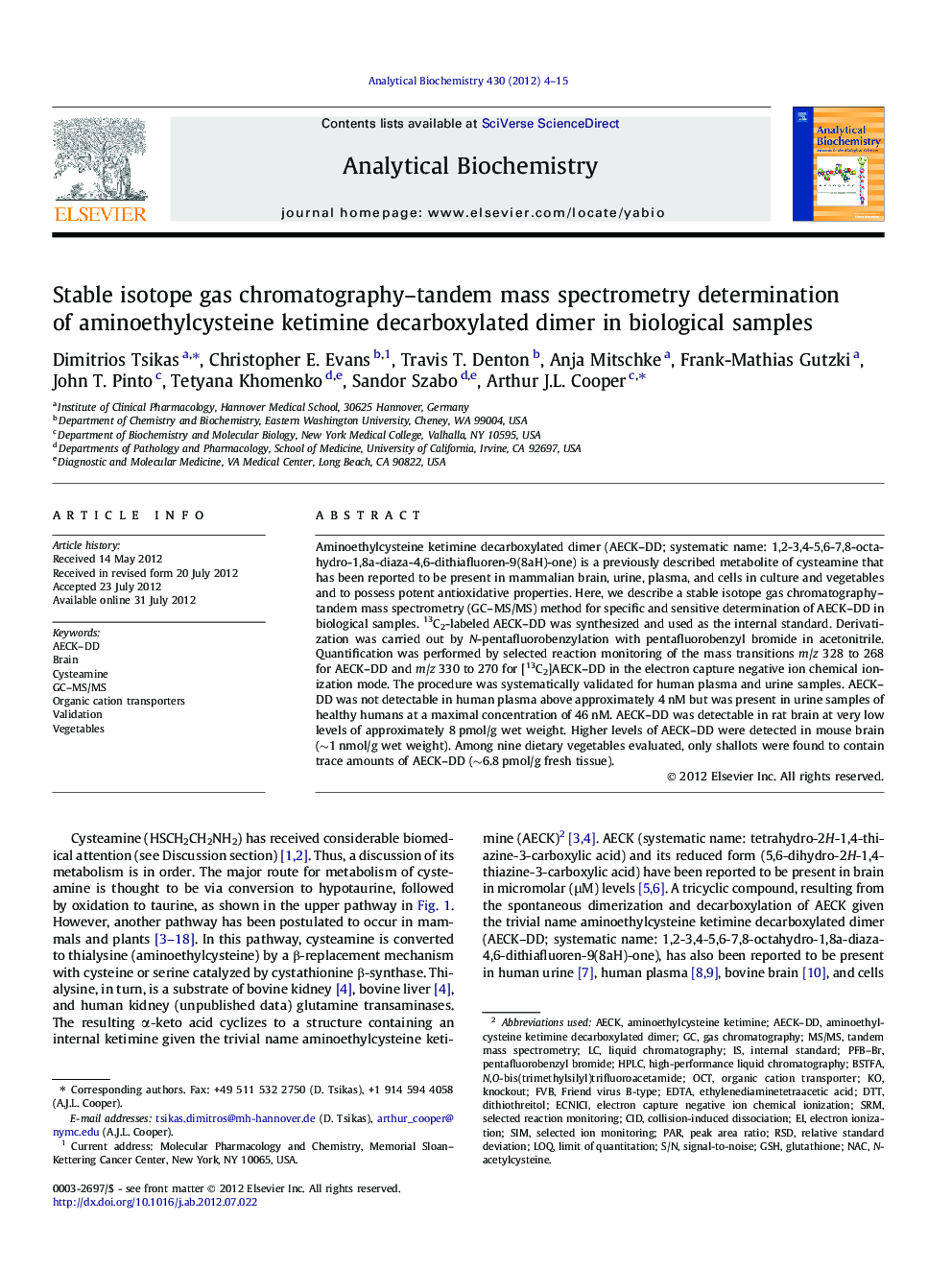| Article ID | Journal | Published Year | Pages | File Type |
|---|---|---|---|---|
| 1172944 | Analytical Biochemistry | 2012 | 12 Pages |
Aminoethylcysteine ketimine decarboxylated dimer (AECK–DD; systematic name: 1,2-3,4-5,6-7,8-octahydro-1,8a-diaza-4,6-dithiafluoren-9(8aH)-one) is a previously described metabolite of cysteamine that has been reported to be present in mammalian brain, urine, plasma, and cells in culture and vegetables and to possess potent antioxidative properties. Here, we describe a stable isotope gas chromatography–tandem mass spectrometry (GC–MS/MS) method for specific and sensitive determination of AECK–DD in biological samples. 13C2-labeled AECK–DD was synthesized and used as the internal standard. Derivatization was carried out by N-pentafluorobenzylation with pentafluorobenzyl bromide in acetonitrile. Quantification was performed by selected reaction monitoring of the mass transitions m/z 328 to 268 for AECK–DD and m/z 330 to 270 for [13C2]AECK–DD in the electron capture negative ion chemical ionization mode. The procedure was systematically validated for human plasma and urine samples. AECK–DD was not detectable in human plasma above approximately 4 nM but was present in urine samples of healthy humans at a maximal concentration of 46 nM. AECK–DD was detectable in rat brain at very low levels of approximately 8 pmol/g wet weight. Higher levels of AECK–DD were detected in mouse brain (∼1 nmol/g wet weight). Among nine dietary vegetables evaluated, only shallots were found to contain trace amounts of AECK–DD (∼6.8 pmol/g fresh tissue).
